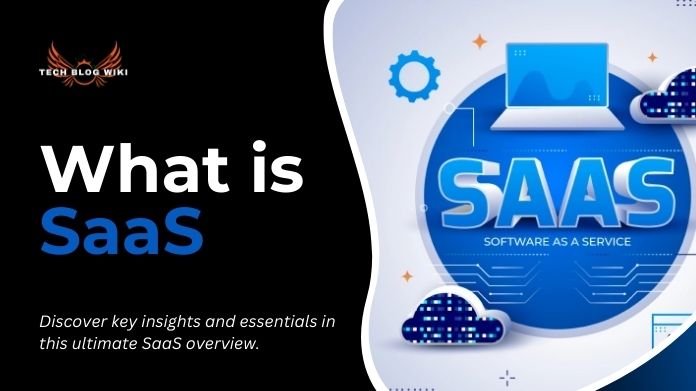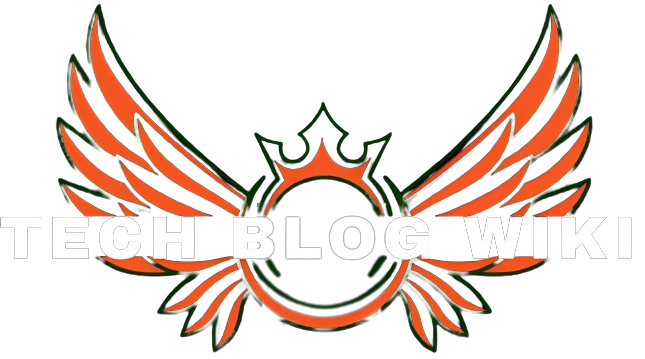Welcome to our comprehensive guide on “What is SaaS” – an in-depth exploration of Software as a Service, a revolutionary technology that has transformed the software industry.
In the ever-evolving landscape of digital solutions, understanding the fundamentals of SaaS is crucial. This Techblogwiki guide aims to demystify the concept, elucidate its core principles, and provide you with everything you need to know about this game-changing paradigm.
Short for Software as a Service, SaaS represents a shift from traditional software deployment models to a subscription-based, cloud-driven approach. As we unravel the layers of SaaS, we’ll delve into its applications, advantages, and the reasons behind its widespread adoption by businesses of all sizes.
Whether you’re a seasoned professional seeking deeper insights or a newcomer curious about the buzz surrounding SaaS, this guide will equip you with a comprehensive understanding.
Join us on this journey where we explore “What is SaaS,” navigating through its evolution, impact, and role in shaping the digital landscape. By the end, you’ll grasp the essence of what is SaaS and appreciate its significance in driving innovation, scalability, and accessibility in the contemporary realm of software solutions.
What is SaaS (Software as a Service)?

A business concept known as “software as a service” (SaaS) uses cloud computing to provide Software to users online. SaaS is built on a subscription model, just like cloud as a service, infrastructure as a service, and platform as a service. Put another way, as long as you’re a member, you can utilize applications and services instead of buying and owning a piece of traditional Software.
What is SaaS model exactly, then? It includes almost every tool you use to access content through a browser, including Netflix, YouTube, Spotify, email, and calendar apps. There is an infinite list. Nowadays, almost everything you use your browser for is most likely SaaS-based, significantly if it charges every month.
How Does Software as a Service Work?

Software as a Service (SaaS) operates on a cloud-based model, providing users access to software applications over the Internet. The functionality and data of these applications are hosted on remote servers, eliminating the need for users to install, manage, and support the software on their local devices.
Here’s a breakdown of how Software as a Service works:
1. Centralized Hosting:
SaaS providers host the software applications on centralized servers. The service provider maintains and manages these servers, permitting users to access the Software from anywhere with an internet connection.
2. Subscription-Based Access:
SaaS is typically delivered on a subscription basis, where users pay a regular fee to use the Software. This subscription model often includes maintenance, updates, and support services the SaaS provider provides.
3. Internet Accessibility:
Users can access SaaS applications through a web browser, making them platform-independent. This accessibility is especially valuable as it allows users to use the Software on various devices and operating systems.
4. Automatic Updates:
SaaS providers handle updates and maintenance tasks on their servers. Users don’t need to install updates manually; the service provider automatically implements the latest features and security patches.
5. Scalability:
SaaS is scalable, allowing businesses to adjust their usage and subscription plans based on their needs. This scalability is particularly advantageous for growing enterprises needing to accommodate an expanding user base.
6. Multi-Tenancy:
SaaS applications often follow a multi-tenant architecture, where multiple users or businesses share the same instance of the Software. However, each user’s data and configurations are kept separate and secure.
7. Data Security and Compliance:
SaaS providers implement strong security measures to protect user data. Compliance with industry standards and regulations is often a priority for reputable SaaS providers, ensuring the security and privacy of user information.
8. Collaboration and Integration:
SaaS applications enable collaboration by allowing multiple users to work on the same project simultaneously. Additionally, many SaaS solutions offer integration capabilities with other Software, providing a seamless experience for users who use multiple tools in their workflows.
The SaaS model streamlines software delivery, making it a cost-effective and convenient solution for people and businesses seeking efficient, scalable, and accessible software solutions.
Pros and Cons of Software as a Service
Pros
- Cost-Efficiency
- Accessibility
- Automatic Updates
- Scalability
- Lower Maintenance Burden
- Collaboration and Integration
- Rapid Deployment
- Accessibility for Small Businesses
Cons
- Internet Dependency
- Limited Customization
- Data Security Concerns
- Subscription Costs Over Time
- Vendor Reliance
- Limited Offline Functionality
- Data Portability Concerns
- Privacy Concerns
Pros of Software as a Service (SaaS):
- Cost-Efficiency: The pay-as-you-go model reduces upfront costs.
- Accessibility: Anywhere, anytime access over the Internet.
- Automatic Updates: Providers handle updates for the latest features.
- Scalability: Easily adjust usage and plans to business needs.
- Lower Maintenance Burden: Providers manage infrastructure and updates.
- Collaboration and Integration: Facilitates teamwork and integrates with other tools.
- Rapid Deployment: Faster implementation compared to traditional Software.
- Accessibility for Small Businesses: Provides access to advanced solutions.
Cons of Software as a Service (SaaS):
- Internet Dependency: Relies on stable internet connectivity.
- Limited Customization: Less flexibility in customization.
- Data Security Concerns: Potential security issues with third-party storage.
- Subscription Costs Over Time: Cumulative costs may surpass one-time purchases.
- Vendor Reliance: Users dependent on the provider’s infrastructure.
- Limited Offline Functionality: Primarily designed for online use.
- Data Portability Concerns: Challenges in migrating data between platforms.
- Privacy Concerns: External data storage may raise privacy issues.
What is the Future of SaaS?
The future of SaaS looks promising as it continues to be a key player in the tech landscape. Expect more innovation, improved AI integration, enhanced cybersecurity, and increased personalization in SaaS solutions.
With a focus on user experience and scalability, SaaS will likely see widespread adoption across diverse industries, making software access more convenient and efficient for businesses and individuals.
Final Note
Our journey into “What is SaaS” reveals its pivotal role in modern technology. SaaS, with its cost-effectiveness, accessibility, and scalability, is not just a technology but a transformative paradigm.
It simplifies software access, updates, and collaboration, reshaping how businesses operate in the digital era. Whether you’re a tech enthusiast or a business professional, understanding SaaS is crucial in navigating today’s digital landscape.
It’s a streamlined, innovative approach to software delivery that continues to evolve, integrating advanced technologies to meet the diverse needs of users globally. Embrace the accessibility and efficiency of SaaS as it paves the way for the future of software solutions.






